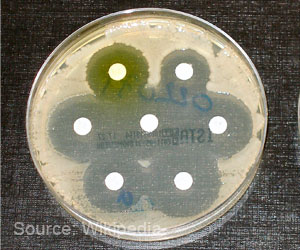An extremely virulent strain of Klebsiella pneumoniae (K pneumoniae) has been found in a patient in the US, this strain in itself is resistant to some highly effective antibiotics.

‘The threat is so evident that it has been declared as a top priority by US Centers for Disease Control and Prevention (CDC) to deal with Carbapenem-resistant K. Pneumoniae. This Carbapenem-resistant K. pneumoniae is a part of the carbapenem-resistant Enterobacteriaceae (CRE) superbug family.’





Carbapenem-resistant K. pneumoniae -- part of the carbapenem-resistant Enterobacteriaceae (CRE) superbug family -- is considered an urgent (among top 3) threat by the US Centers for Disease Control and Prevention (CDC). "The problem of antibiotic resistance is becoming increasingly alarming. The combination of increased virulence and multidrug resistance makes the situation worse," said David Weiss, Director at the Emory University in Georgia, US.
The results, presented at the annual meeting of ASM Microbe 2018 in Georgia, revealed the K. pneumoniae isolate was heteroresistant to the last resort antibiotic colistin. This means that a small subpopulation of cells showed resistance.
Heteroresistance is more difficult to detect with standard antibiotic susceptibility tests in clinical microbiology labs, and this isolate was classified as susceptible to colistin by standard methods.
This discrepancy is particularly important, as researchers have shown that such undetected colistin heteroresistance can cause antibiotic treatment failure in mice.
Advertisement
For the study, the team examined 265 isolates of carbapenem-resistant K. pneumoniae using a simple "string test."
According to Wozniak, the isolate was approximately ten times more virulent in mice than other isolates of the same sequence type.
Further, whole-genome sequencing discovered that the isolate carried several antibiotic resistance genes, along with a new arrangement of virulence genes, but not the same set seen in similar K. pneumoniae isolates from Asian countries, she said.
Source-IANS














